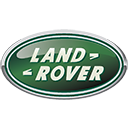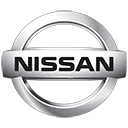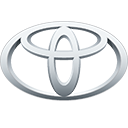- Spongy brakes, or the brake pedal depressing to the floor. This normally means the brake fluid needs checking, topping up or replacing. Brake fluid is hydroscopic, meaning it naturally absorbs water. When water enters the system it reduces the boiling point of the brake fluid, allowing some of it to turn to gas under heavy braking. Gases are easily compressed, leading to severely reduced braking performance when you least want it.
- Squealing brakes. This is a normal sign that your brake pads require replacement.
- Seized brakes. This often happens when vehicles are left alone for a period of several months, normally outdoors where the braking system components can rust. We can attend vehicles in the local area and recover them in for checking.
- Your brakes are only as good as the surface you're driving on. When it is safe to do so, you may find it helpful to press the brake pedal slightly more than normal from a low speed in an attempt to make the vehicle skid briefly. This allows you to gauge how much traction the road has, and how quickly you can expect to stop in icy conditions. Never try this in a situation that may cause any danger to yourself or others.
- Many slightly up-market vehicles are equipped with traction control systems to help control skidding. These systems help, but are less effective in icy conditions.
- Front wheel drive vehicles are better than rear wheel drive in snow and ice - think of it like trying to push (rear wheel drive) or pull (front wheel drive) a large awkward object over a slippery surface.
- When you get in to a skid, the first thing to do is remove your foot from the accelerator. Shifting to neutral may also help, focus on where you want to go (not where the vehicle may be going), and steer very gently to get you back on course. If you have to use the brakes, do so very gently.
Customer Reviews
Excellent speedy service ... replaced a flat tyre really quickly for me and were very reasonable.... Read More
Heather Slater
I bought my car from Arnolds and have had it mot and serviced there since. Very professional, broke down the costs, given advice and been very helpful... Read More
Kelanne mcshane
Just a small job, but so quick and efficient. Booked late afternoon yesterday, took the car in just now and all done in ten minutes. Very polite and c... Read More
Ian Mabb
Highly recommend Arnolds garage . Very friendly, honest and approachable. Nothing is too much trouble and will always try to accommodate if you need t... Read More
Emma Darke
A reliable, professional and friendly service 👍 I felt my car was in expert hands. Certainly will be using this garage again. A big 5⭐️ recomme... Read More
Deborah L Tyrrell
My car was brought into Arnold's by my Dad last october for an MOT so much was found to be wrong. Unfortunately one thing after another was wrong and... Read More
Hannah Lucking
Great Service. Highly recommend using this garage for car sales and servicing.... Read More
Simon Wallis
Very impressed with the customer services. Always happy to support with different issues. Expertise in car maintenance.... Read More
Graham Goodwin
They are so good I continue to drive from my new home 25 miles away to have my car serviced and MOT'd. Quick, efficient, helpful, and really friendly.... Read More
Kevan Pegley
5* ++++ Rating Ive never come accross a garage of more helpful proprietors in my long life. Bought a cheap Astra auto estate run around third car for... Read More
Jordan
Very happy with the services and staff at Arnold's garage. They are always so polite and happy to help their customers... Read More
Kimberley Kelly
Lovely service and they always get the job done super quick - they were very accommodating when I didn’t have a lift to pick up my car and drove ove... Read More
Natasha Sofia
Arnolds searched for a car to our specifications...serviced and checked it...provided courtesy car. So pleased with service they provided. Friendly, h... Read More
Pauline Palmer
Our old Hyundai has done over 200,000 miles and had gradually developed a terrible noise when driving over 20 mph. Took it into Arnolds first thing in... Read More
David Hudson
The staff at Arnold Garage are always friendly and ready to help and the shop is clean and tidy with lots of stock love the bread 😀... Read More
Christine Cox
Arnold’s Garage helped me out today with a problem with my car. They were so friendly and extremely helpful from the very first moment I called them... Read More
Esther W
Very Experienced and knowledgeable team, Specialist services available for Modern and Classic Vehicles..... Read More
Andy Gilday
Got my first car from here a week ago, less than a week later I picked it up after it having all work completed to a high standard. So when I picked i... Read More
Hannah Cox
Delighted to discover that in addition to excellent Garage services, Arnold's now has a Post Office! Open the same hours as the garage. Brilliant! Let... Read More
Catherine Ridgeon
I had my car serviced at Arnolds on Monday - I cannot praise them enough, & highly recommend them. They detected a big problem with my car that I'm su... Read More
Joanne Claire
Arnold's Garage Haslemere, are just extremely brilliant and out of this world, they have the best top notch first class customer service and seem to a... Read More
Stanley Kunyeda
Thanks to Peter and the crew for repairing my car so quickly at such short notice this morning - needing new brake pads and 4 new tyres. Great friendl... Read More
Sarah Foster
Arnold's is a fantastic family run garage who provide an excellent personal service. The personal service even extends to the team opening the garage... Read More
Anonymous
Contact Details
Shottermill PondsCamelsdale Road
Haslemere
Surrey
GU27 3RB 01428 652121 info@arnoldsgarage.co.uk

 01428 652121
01428 652121
 Used AUDI
Used AUDI Used BMW
Used BMW Used CITROEN
Used CITROEN Used FORD
Used FORD Used HYUNDAI
Used HYUNDAI Used JAGUAR
Used JAGUAR Used LAND ROVER
Used LAND ROVER Used MAZDA
Used MAZDA Used MERCEDES-BENZ
Used MERCEDES-BENZ Used NISSAN
Used NISSAN Used SKODA
Used SKODA Used TOYOTA
Used TOYOTA Used VAUXHALL
Used VAUXHALL